Shuto (Fish Innards Pickled in Salt): A Traditional Japanese Preserved Food
Aug 16,2013
Shuto (Fish Innards Pickled in Salt): A Traditional Japanese Preserved Food
Aug 16,2013
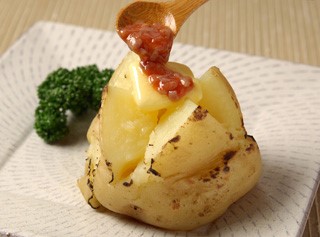
Photo courtesy of Shiino Foods
Our ability to obtain fruits, vegetables, and seafood regardless of the season is a very recent phenomenon. Before modern refrigeration and transportation technologies, people had no choice but to eat what was available at the time.
People living in temperate regions, where fresh food is available throughout the year, can depend on seasonal produce alone. But in many parts of the world, due to climate or topography, it is hard to secure food for long periods during the year. This necessity drove people to develop preserves. A wide variety of techniques, such as fermenting, drying, or smoking perishable foodstuffs, are used to make preserves. Even today, many kinds of preserves are being formulated and produced all over the world.
This series is a journey that explores the mastery of preserves and the wisdom of everyday living, which form the foundation of food cultures. In our fourth installment, we look at the ultimate pub snack — shuto, which is sometimes dubbed Japanese anchovy.
▶Himono (Dried Fish): A Traditional Japanese Preserved Food
▶Hoshi-imo (Dried Sweet Potato): A Traditional Japanese Preserved Food

In Japanese, shuto literally means “saké thief”. The name is said to originate from a lord in feudal times who, while nibbling on shuto, said: “This dish is making me thirst for more saké. It’s so delicious, I almost want to go out and steal more saké so I can keep on enjoying it.”
Shuto is made by soaking the innards of bonito, tuna, or other fish in salt, letting the mixture age for many months, and then adding seasoning.
The first records of shuto being consumed in Japan date back some 300 years to the Edo period (1603 to 1868), and the delicacy is still a favorite among saké drinkers today.
Chiba Ryuichi from the Processing Section, Production Division of Shiino Foods, a long-standing shuto producer, has worked for the company for 20 years. From his veteran’s perspective, he makes a keen distinction. “I meet a lot of people who think that shuto and shiokara are the same thing. But the two are, in fact, made with different ingredients and with different processes. For shuto, we select and use only the stomach and intestines of bonito or tuna, whereas all the innards, including the heart, liver, and other organs, are pickled to make shiokara. Another difference is that shuto is matured slowly over a period of six months to a year.”
Shuto is far less bitter than shiokara because the stomach and intestines are carefully sorted and cleaned, leaving out the other organs and viscera. Because of this thorough selection process, only 30 to 40 grams of shuto ingredients are obtained from a four to five kilogram bonito.
The flavor is largely determined by the aging (fermentation) process. Unlike lightly seasoned shiokara, shuto is noted for its deep and uniquely mellow richness.
Chiba continues. “The aging process causes the enzymes naturally occurring in the stomach and intestines to ferment, producing various umami ingredients such as glutamic acid, inosinic acid, and amino acids. Shuto makes use of natural fermentation to great effect, which has the additional benefit of a long shelf life (around one year at room temperature if left unopened).”
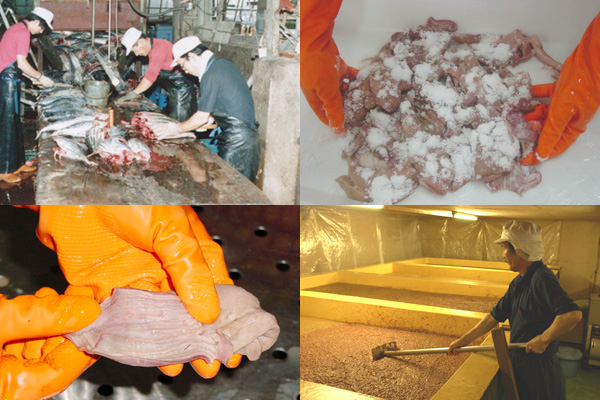
Photo courtesy of Shiino Foods
Two of the most valued umami ingredients in cuisine around the world are glutamic acid, found in kelp, cheese, seaweed, and onions, and inosinic acid, which is contained in bonito flakes, tuna, and beef shank meat. So there’s a solid scientific explanation as to why shuto tastes so good that you can’t stop drinking saké.
Bonito and tuna — the primary ingredients of shuto — are landed at the port of Yaizu in Shizuoka, Japan’s largest bonito and tuna port by tonnage.
The fish are quickly gutted after landing. The stomach and intestines used for bonito shuto are removed from the rest of the body, which is turned into dried bonito flakes. The fresh stomach and intestines after cleaning have a pink tint and look like they could be eaten as is.
Chiba describes the following processes. “The ingredients are immersed immediately into a salt solution and cut into small pieces before being moved to the maturation enclosure. If the ingredients begin aging in the cold winter months, we let them mature for about one year. If the aging begins in the summer months, it takes about six months. Since the degree of maturation is a big factor in the eventual flavor, we continually check the aroma and taste of each lot.”
Fish innards — i.e., shuto — have almost zero fat content, compared to beef or pork entrails. Full of nutrients, shuto can be used as a seasoning much like salted anchovies are used in Western cuisine. Unfortunately, the nutritional value of shuto is not widely known.
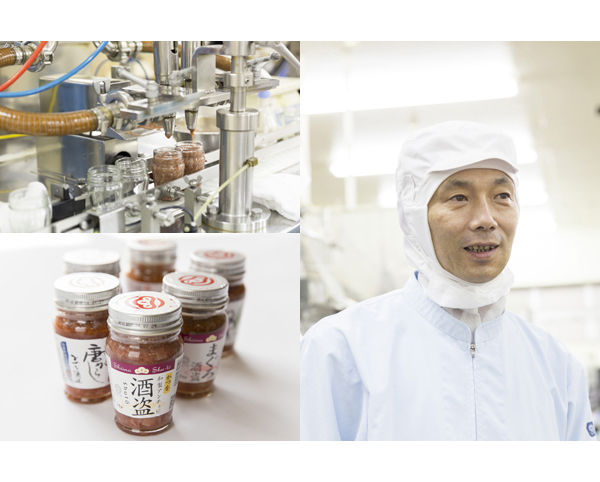
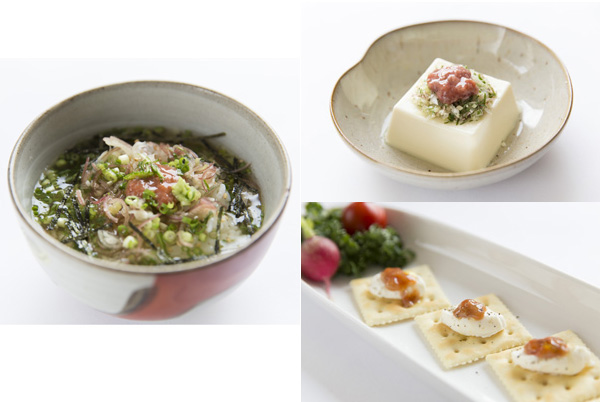
Shiino Foods has been working to broaden the appeal of shuto, especially to younger people, in recent years as part of its bid to spread the word about the benefits of shuto.
Maruyama Hirokazu, general manager of Shiino Foods’ Production Division, explains their mission. “There’s a widespread perception that shuto is an old man’s delicacy to have with saké. But we see shuto as being far more than that.”
With this in mind, the company has been marketing shuto as “Japanese anchovy” since 2011, taking advantage of how well it compliments many dishes. Creating recipes for Japanese anchovy is the job of food coordinator Endo Kaoru, who works in the company’s Product Development Department, Production Division. On the day of our visit, he prepared three special dishes for us.
The first was a chilled soup with broth poured over rice and topped with shiso, Japanese wild ginger, and other spices. Garnishing this with a little bit of bonito shuto adds depth to the dish and makes it more appetizing.
Similarly, topping chilled tofu with bonito shuto brings out more body in the flavor that’s perfect as a pub snack.
Tuna shuto, which provides more umami savoriness than bonito, is just the right touch on canapes.
Endo explained the choices. “Shuto goes remarkably well with cheese, fermented soybeans, and other fermented foods”.
We were amazed by how much the taste was transformed just by adding a dash of shuto. The dishes we tried were all garnished with shuto at room temperature, but shuto is even more useful when heated.
Endo described the advantages. “If you heat up and melt the shuto, it mixes more readily with other ingredients, which further enhances the richness and umami. So you can use shuto with any cuisine, from fried rice, pasta, and pizza to rice with green tea.”
Shuto offers a wider range of seasoning possibilities than anchovies. The company has set up tasting booths at the stores it operates (such as its store in the Terrace Mall Shonan shown in the photo) so more people can experience the taste of shuto. And at the Ashigara Service Area, the company sells special wappa-meshi (dishes in round containers) and chanja (a spicy Korean delicacy made from cod innards) accented with shuto. Shiino Foods spares no effort in coming up with new arrangements of beloved traditional flavors and passing them on to new generations.
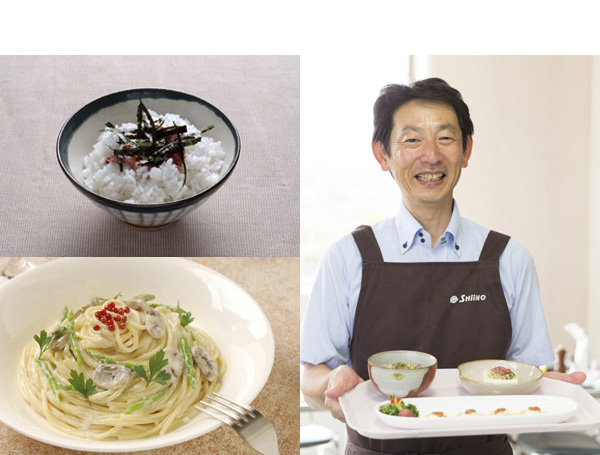
Photo courtesy of Shiino Foods
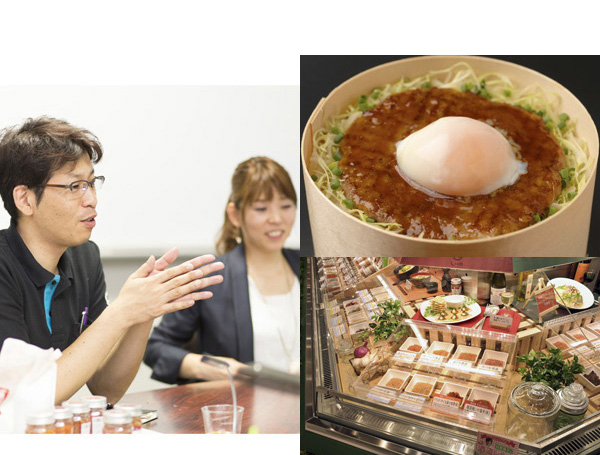
Photo courtesy of Shiino Foods
▶Himono (Dried Fish): A Traditional Japanese Preserved Food
▶Hoshi-imo (Dried Sweet Potato): A Traditional Japanese Preserved Food